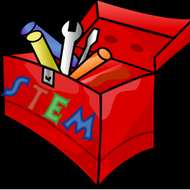Mars Rover App Creation
(View Complete Item Description)Based on their experience exploring the Mars rover Curiosity and learning about what engineers must go through to develop a vehicle like Curiosity, students create Android apps that can control LEGO MINDSTORMS(TM) NXT robots, simulating the difficulties the Curiosity rover could encounter. The activity goal is to teach students programming design and programming skills using MIT's App Inventor software as the vehicle for the learning. The (free to download) App Inventor program enables Android apps to be created using building blocks without having to actually know a programming language. At activity end, students are ready to apply what they learn to write other applications for Android devices.
Material Type: Activity/Lab




















